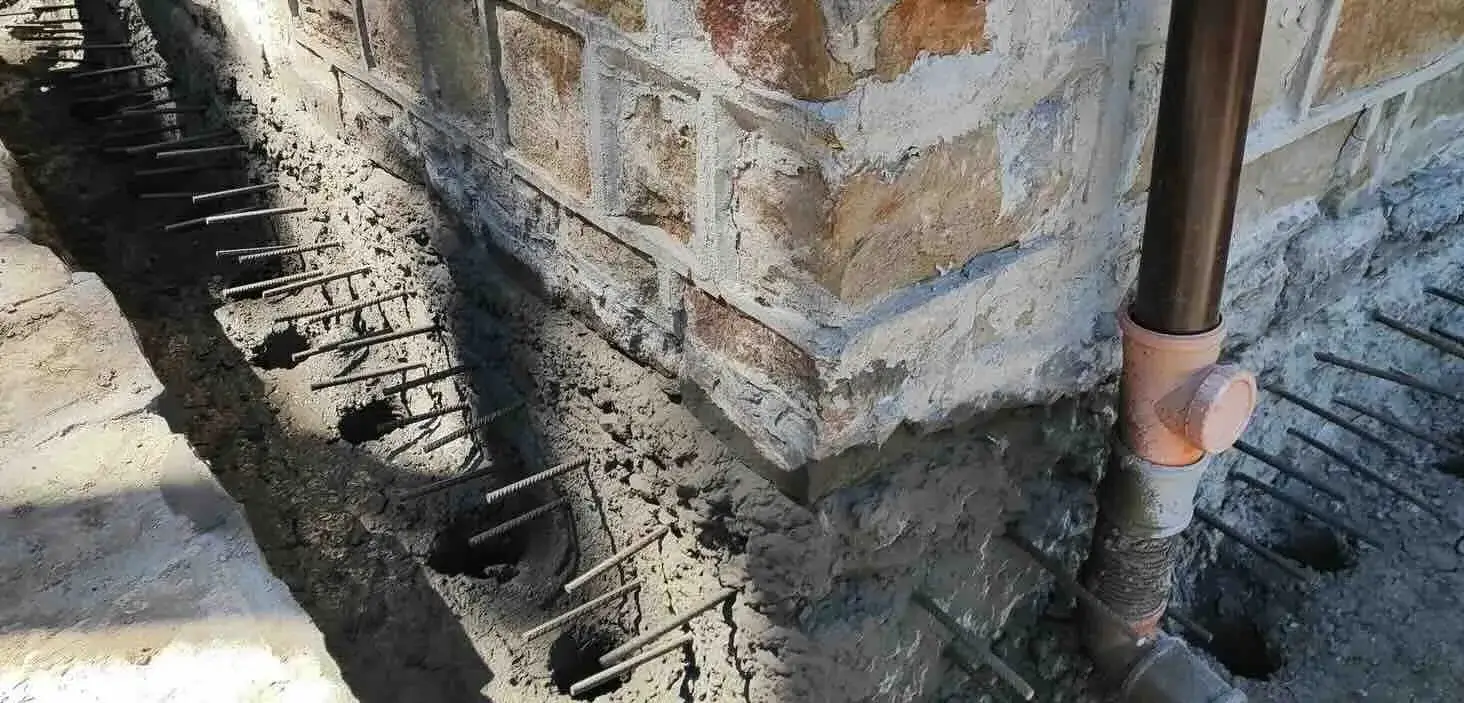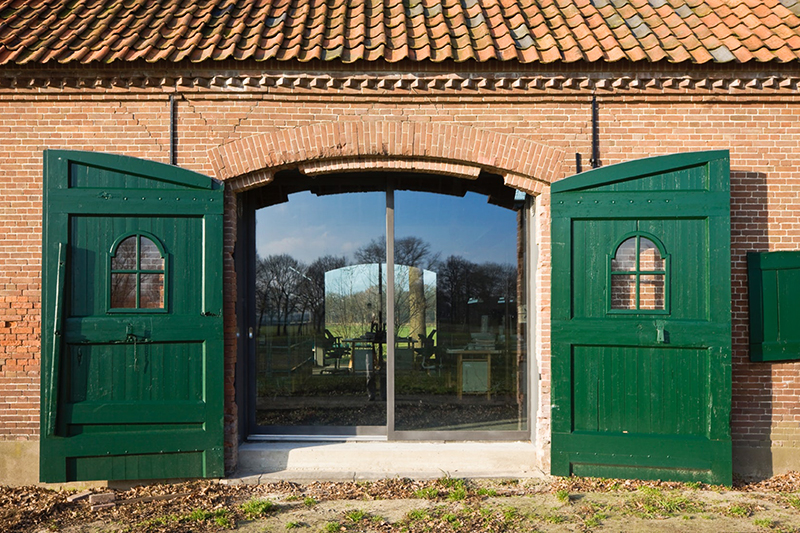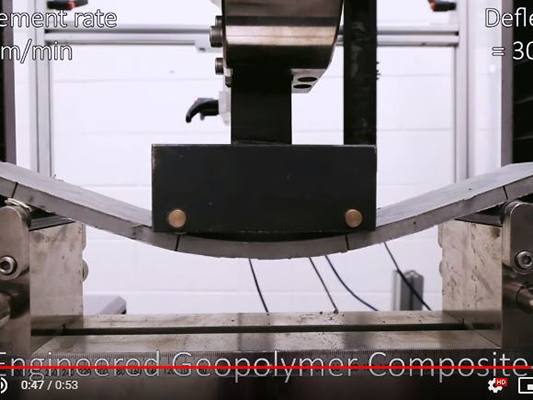Какво представлява капилярното покачване на вода в сградата?
Процесът капилярно покачване се изразява в издигането на вода през стените на мазето или други подземни структурни елементи, причиняващо влага в помещенията. В зависимост от състава, свързаността и размера на порите в материала, водата се издига повече или по-малко, причинявайки влага чрез капилярност.
Материали като тухла, дърво и недобре уплътнен бетон имат пореста структура, позволяваща на влагата да се покачва във височина.
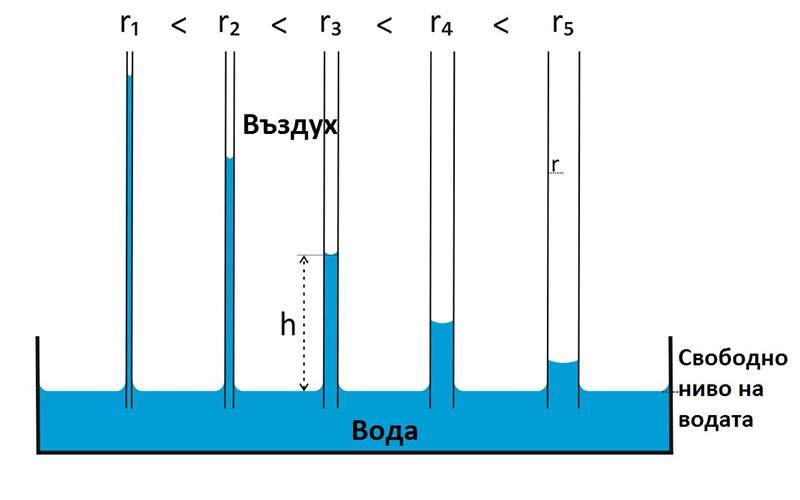
В химичния състав на влагата се съдържат повече или по-малко минерални соли, които се отлагат върху повърхността на стената при нейното изпаряване. Ясен признак за този процес са промени в цвета на стената, най-често изсветляване.
Ако забележите мокри петна по стените в близост до пода, най-вероятно вашият дом е засегнат от капилярност. Височината, която може да достигнат влажните петна, зависи от фактори като:
– ниво на подпочвените води и неговата сезонност
– материали, използвани при строителството
– температура, влажност и проветряемост на помещенията
– условия за преминаване на влагата от стената към помещението
– наличие на соли и тяхната кристализация по повърхността на стената
– предишни интервенции, целящи ограничаването на влагата в помещенията
Капилярна влага се появява при стени, които не са добре изолирани в основата или където има повреда, или не добре изпълнена хидроизолацията. Високите подпочвени води в много региони са целогодишни, което създава условия за интензивно развитие на мухъл, плесени, съпътстващите ги неприятни миризми и лош външен вид на помещенията.
Какви са рисковете ако не решим проблема с влагата?
Повишената влажност се изразява в мокри петна, набъбване на мазилката, отделяне на парчета от нея, промяна в оцветяването на стените, образуване на мухъл, плесен и неприятна миризма, гниене на подови покрития и обзавеждане.
Освен чисто естетическите негативи, повишената влажност в стените и помещенията крие сериозни рискове за здравето на техните обитатели. Постоянното излагане на спори от плесени и отровни субстанции, отделяни при обмяната на веществата, както и високата влажност стават причина за инфекциозни заболявания, алергии, астма и дори рак.
Друг силно пренебрегван ефект от дългото излагане на капилярна влага в сградата е отслабването на материалите, от които е изградена тя. Корозия и намалени механични свойства се неблюдават не само при стоманените и дървените елементи, но и при тези от бетон и тухла.
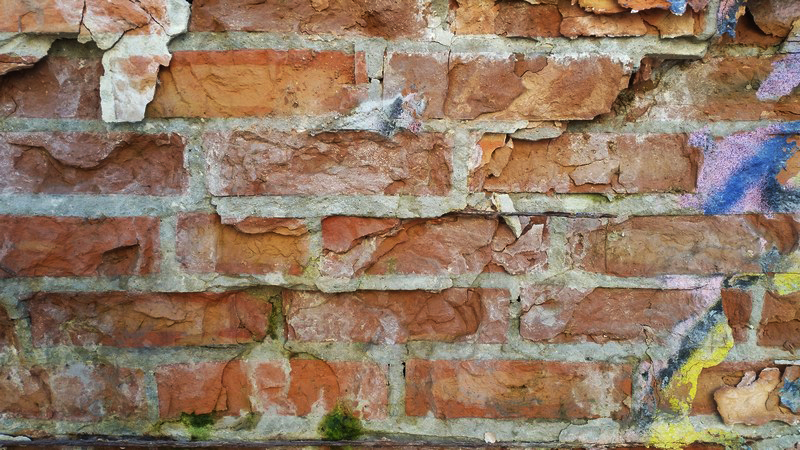
При изпарението на водата по повърхостта и във вътрешността на стената, се образуват солни отлагания. Процесът на преминаване на капилярната влага през конструкцията е съпътстван с извличане на химични елементи от състава на градивните материали, с което чувствително се намаляват техните механични показатели. Запушването на повърхностните пори със соли създава допълнително хидростатично налягане и отделяне на мазилката от стените. Също така, с времето се наблюдава и повдигане нивото на омокряне в стената. Високата влажност чувствително увеличва топлопроводимостта на материалите, с което се повишават и разходите за отопление и охлаждане на помещенията.
Неглежирани във времето, такива процеси значително намаляват качествата на сградата и нейният живот.
Какви са възможните решения?
Подобряване на вентилацията
Изкуственото вентилиране на помещенията и монтирането на влагоуловители в някои случаи решават проблема като изсушават повърхностния слой на засегнатите участъци, с което се спира развитието на мъхъл и плесени. В случаите на малки количества влага, преминаващи от почвата към подземните части на сградата или влага, генерирана в процеса на експлоатация на самите помещения (перални, санитарни помещения и други), може да се каже, че този подход е достатъчно успешен и най-рентабилен. Но не и универсален! Когато става дума за интензивно проникване на влага от подпочвените води, ефекта от въздушното осушаване е засилена филтрация на водата и ускоряване в пъти на опасните процеси на химична корозия в материалите.
Третиране на капилярите в материала
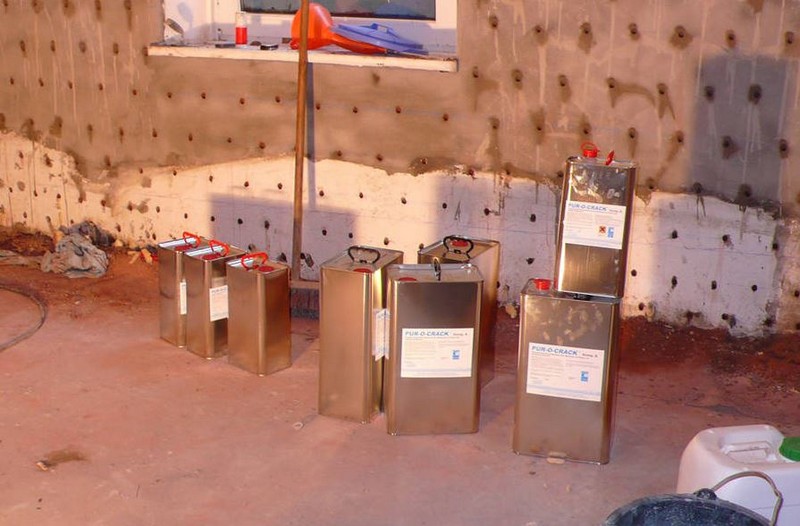
Запечатването на капилярите се извършва по различни технологии, най-вече според материала, от който е изградена стената и неговото състояние непосредствено преди ремонта. Основно методите се различават в зависимост от налягането, с което се изпълнява напояването с минерализираща течност. Силно пориозните материали като глиненна зидария могат да бъдат третирани безнапорно, докато сравнително по-плътните бетони се нуждаят от принудително създадено налягане. То е необходимо за да се постигне водоплътна вътрешна бариера през цялото сечение на елемента. Полимеризиращите продукти използват различни химични елементи, но общият принцип е за намаляване броя и размера на капилярните пори. Новосъздадените химични съединенияи имат силно хидрофобно действие.
Изпълнение на водоплътна мазилка/замазка/мембрана
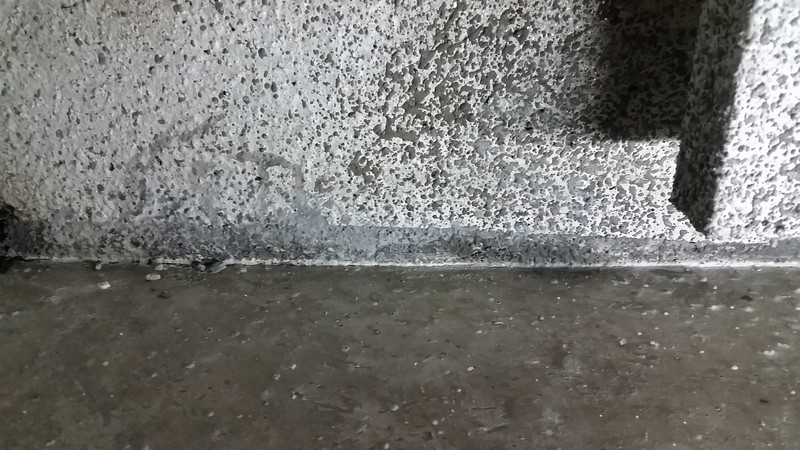
Състава и свойствата на някои материали не допускат прилагането на горния метод. Когато става дума за подземни части от сградата, достъпът от външната страна на засегнатите участъци също често е силно затруднен. Тогава остава възможността за запечатване на влагата в стената чрез изграждане на водоплътна бариера от вътрешната страна на основата на битум, циментов разтвор и други. Такова решение е най-често предлаганото от майстори и производители на хидроизолационни материали.
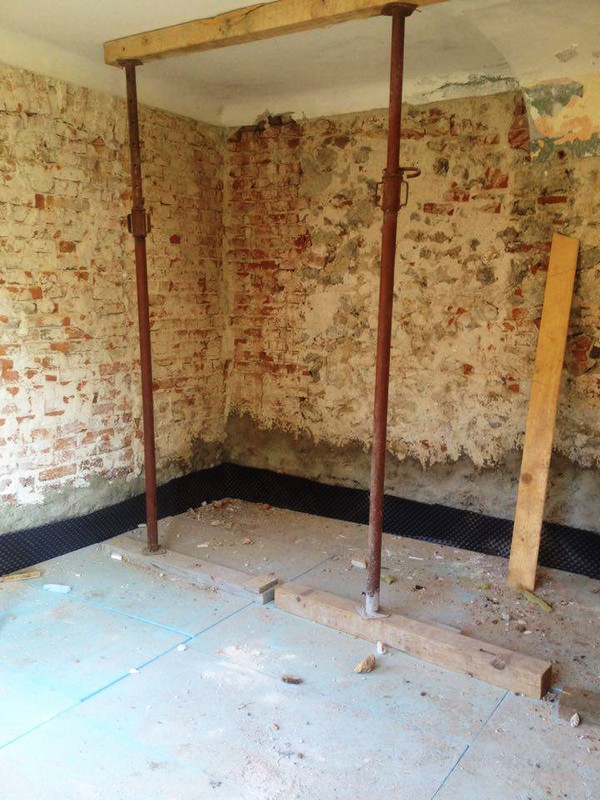
Съществени недостатъци при такъв подход са недълготрайният ефект на повечето системи, както и скриването на проблема, без той реално да бъде решен. Развитието на плесени и мухъл продължава, а конструкцията на сградата неминуемо отслабва с времето. Неколкократното изпълнение на хидроизолацията и съпътстващите я довършителни разходи поставят сериозно под въпрос рентабилността на тези ремонти.
Drainage systems
Изграждането на дренажна система е едно по-скъпо решение, но то има и своите неоспорими предимства. Една добре изпълнена дренажна система би могла да функционира безпроблемно десетилетия, като напълно предпазва сградата и вътрешните и части от действието на подпочвените води. Чувствително се повишават санитарно-хигиенните условия, както и топлоизолационните показатели на подземната част от стените. В определени случаи дренажите могат да послужат и за частично стабилизиране на почвата при потъване на фундаментите. Дълбочината на полагане на дренажните тръби зависи от външните размери на сградата и почвените характеристики.
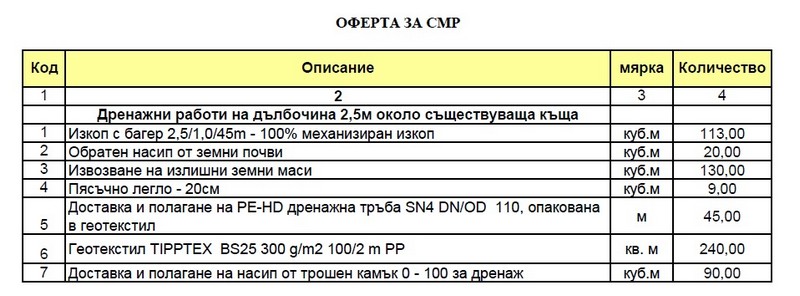
За съжаление, в търсенето на най-ниска цена собствениците нерядко попадат на изпълнители, предлагащи компромисни решения и в крайна сметка се налага повторното изграждане на нов дренаж. Спестяването от геотекстилна мембрана, плитко полагане на дренажните тръби и изпълнението на обратен насип с обикновенна почва обричат начинанието на провал. Макар и в редки случаи, изпълнението на частичен дренаж по една или две от фасадите може да доведе до неравномерни слягания и конструктивни проблеми за къщата. Липсата не геотекстил и засипването на обратния насип с неуплътнена почва причиняват движения в почвата, респективно и в основите на постройките в близост. В рамките на няколко години след полагането на дренажа фундаментите поддават, образувайки коси пукнатини в стените.
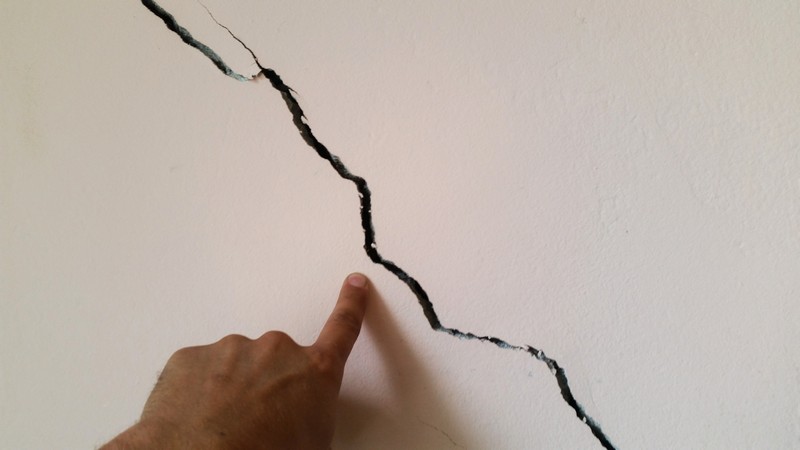
Друг важен момент при изпълнението на по-мащабни дренажни дейности е извършването на хидрогеоложко проучване. Информацията от него служи за надеждно проектиране на отводнителната система с минимален обем на изкопните работи. Резултатите от геоложкия доклад могат да се използват и при бъдещи укрепителни дейности.
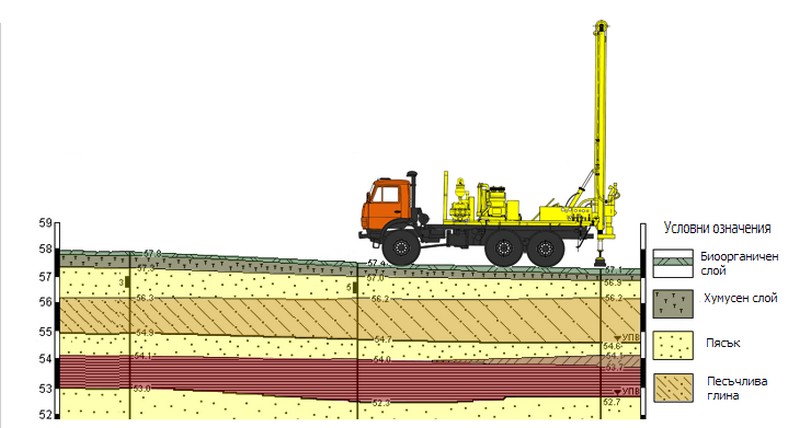
В крайна сметка, изборът на решение е индивидуален за всеки обект. Компетентното определяне размера на щетите, тяхната специфика, техническите възможности за манипулациии върху материалите, предложените варианти за ремонт, предназначението на помещенията и желанието на инвеститора за поддръжка на сградата са ключовите фактори. Те определят в каква степен и за какъв период от време ще бъде решен всеки един строителен проблем.


